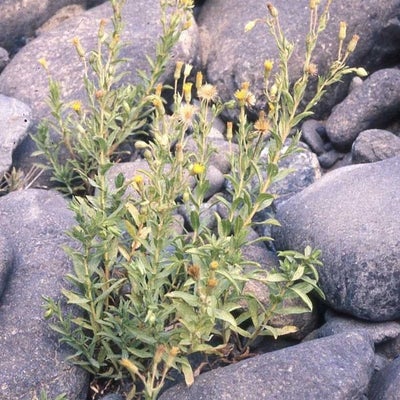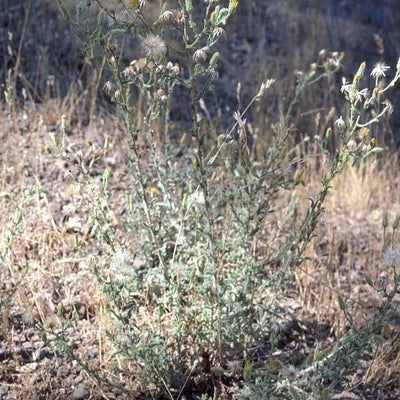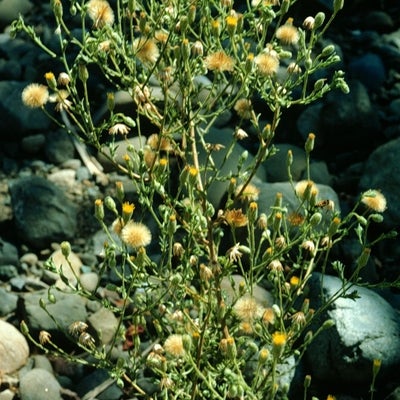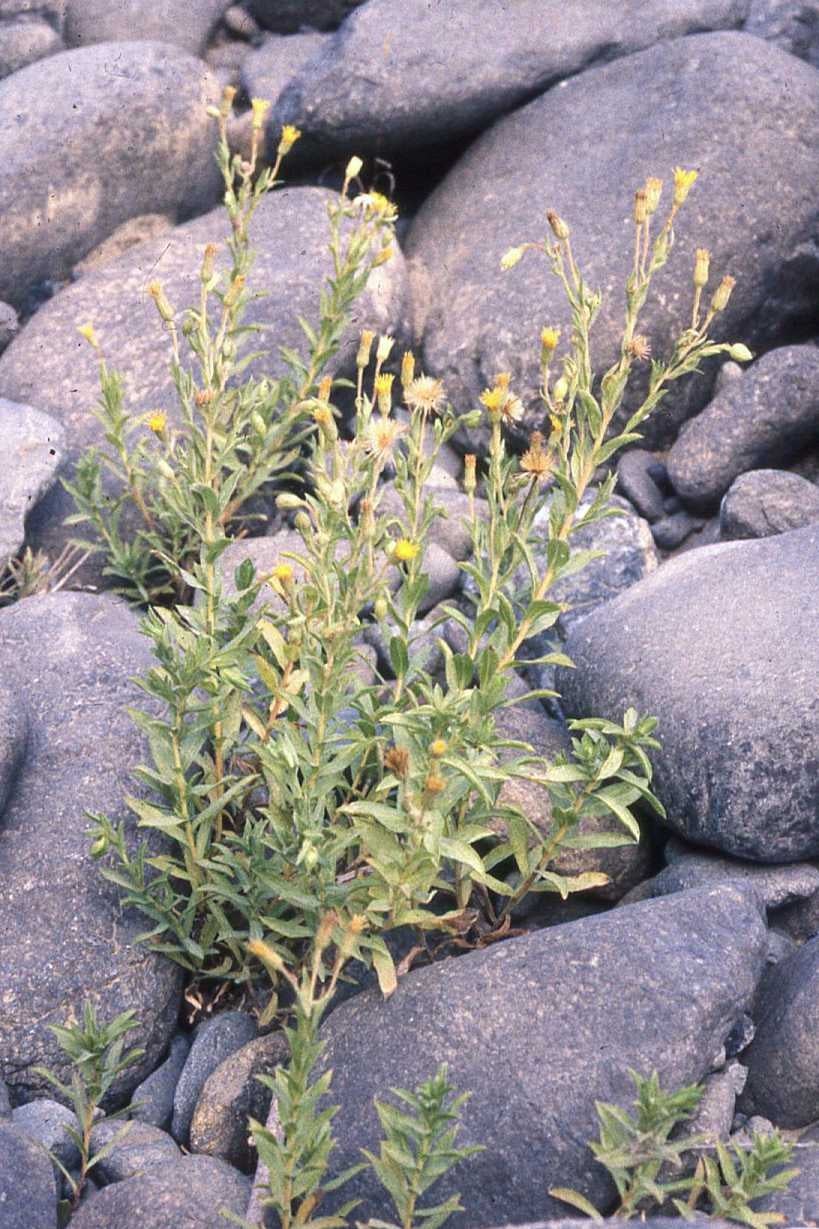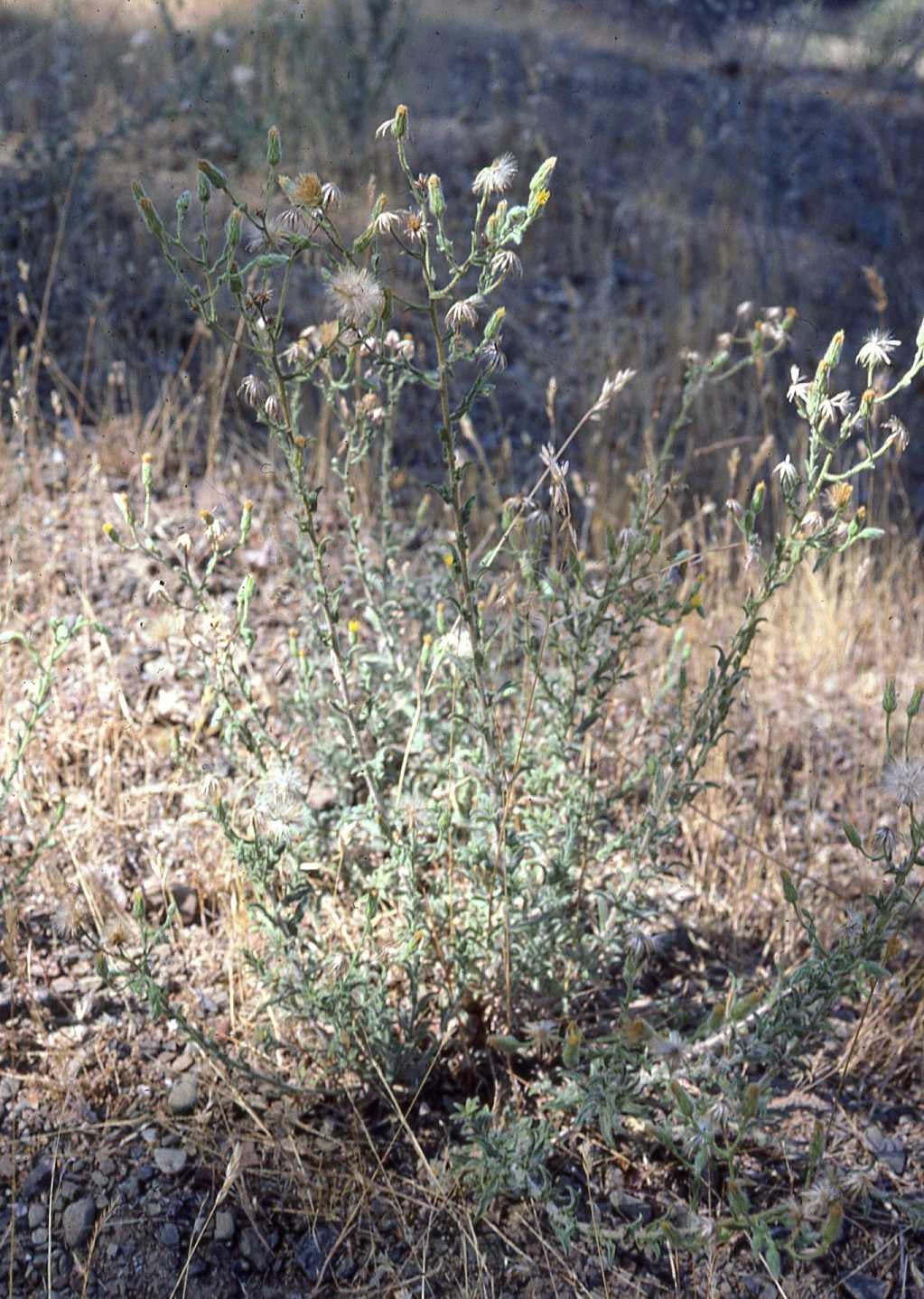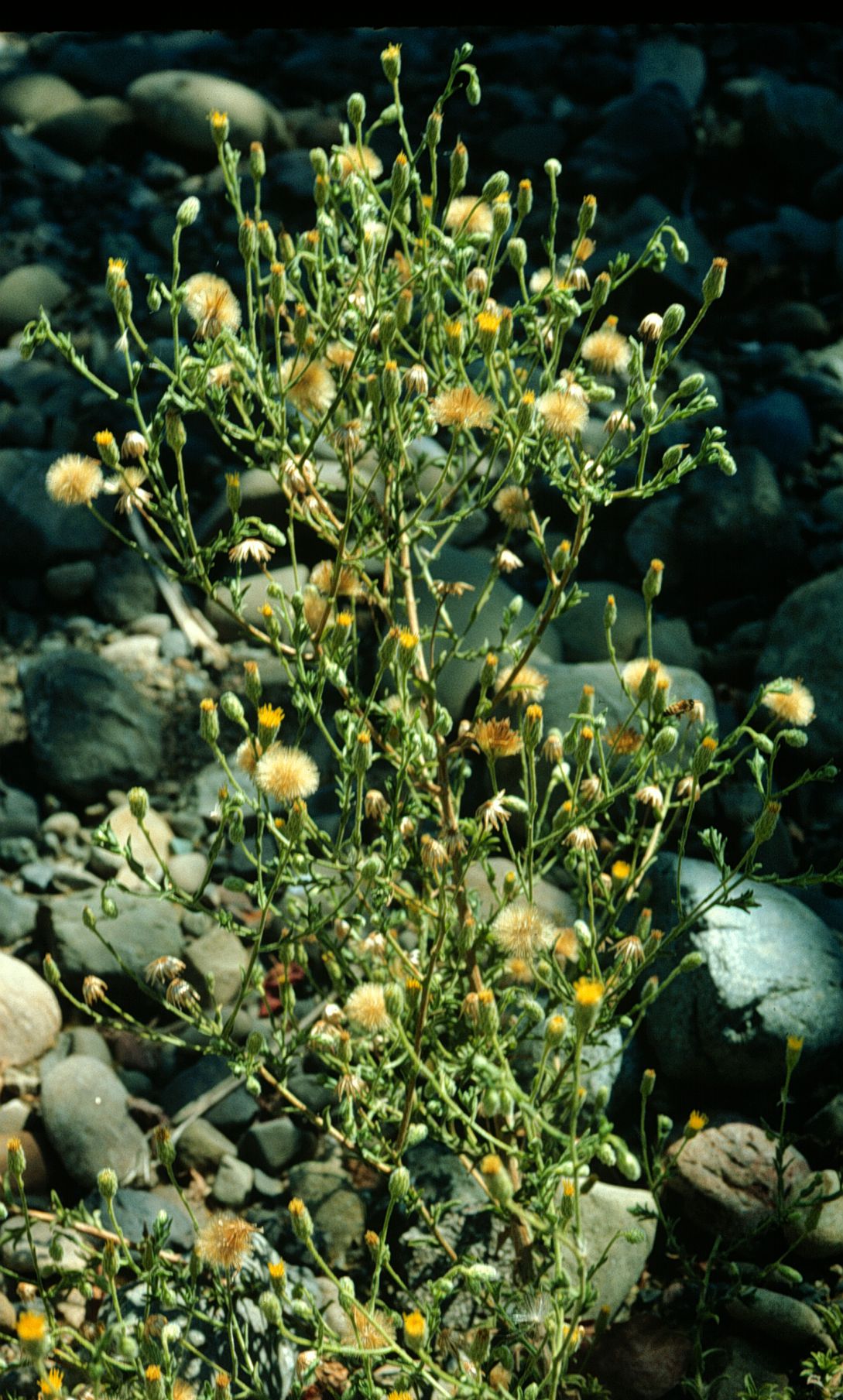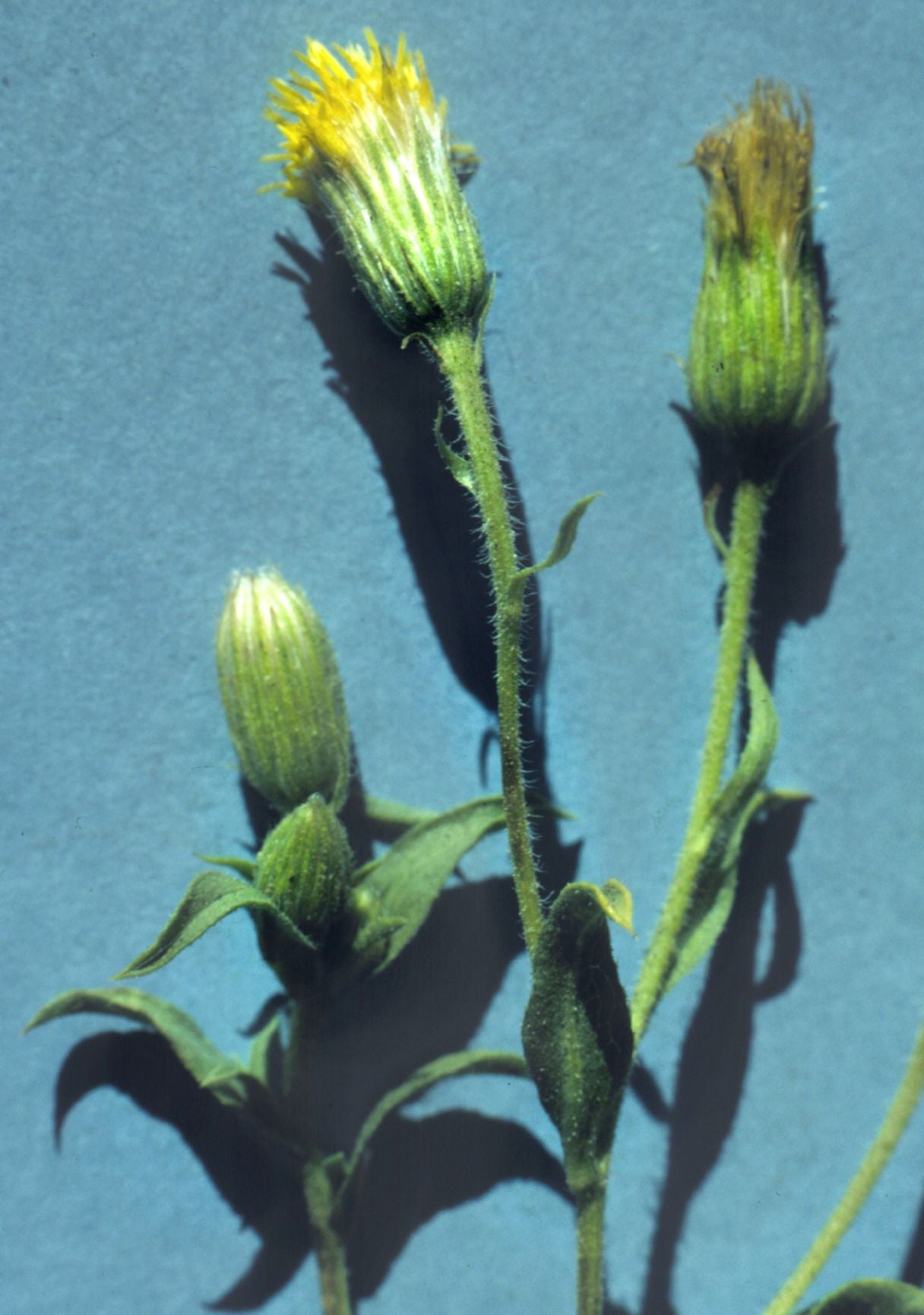Oregon Goldenaster
Heterotheca oregona (Nutt.) Shinners is a rayless species native to Cascade Mts. and Coastal Ranges from Washington south to central California. The species is diploid (2n=18). See Semple (2006 FNA).
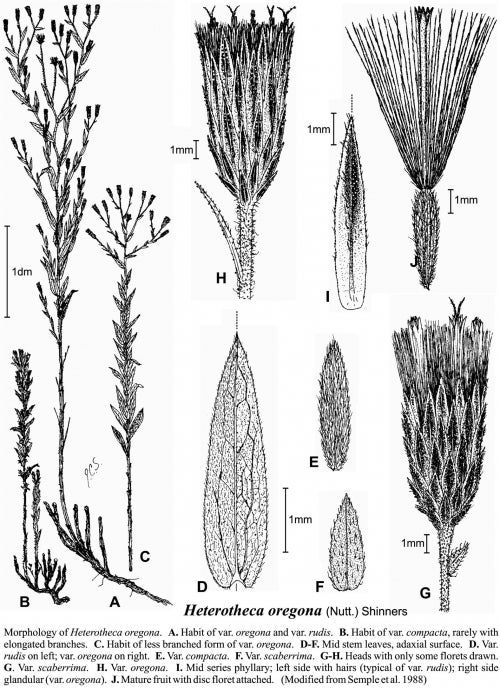
Four varieties were recognized by Semple et al (1988) and Semple (2006):
- var. compacta (D.D. Keck) Semple
- var. oregona
- var. rudis (Greene) Semple
- var. scaberrima (A. Gray) Semple
Semple, J.C., C. Leeder, C. Leuty and L. Gray. 1988. Heterotheca sect. Ammodia (Compositae: Astereae): a multivariate study of H. oregona and specimens of Brewer's (golden)aster. Syst. Bot. 13: 547-558.
Last revised 20 April 2025 by J.C. Semple
© 2025 J.C. Semple, including all photographs unless otherwise indicated
1-4. Heterotheca oregona. 1. Habit and habitat, var. oregona, Semple & Heard 8526, Del Norte Co., California. 2. var. scaberrima, Semple & Heard 8599, Santa Cruz Co., California. 3. Inflorescence, var. scaberrima, Semple & Heard 8600, Santa Clara Co., California. 4. Heads, var. rudis, Semple & B. Semple 5687, Mendocino Co., California.
